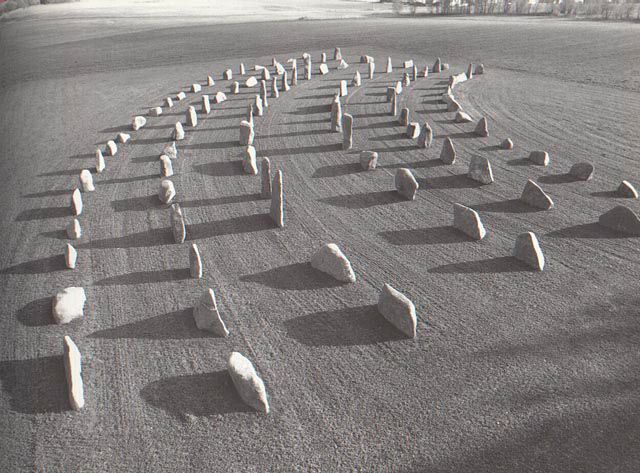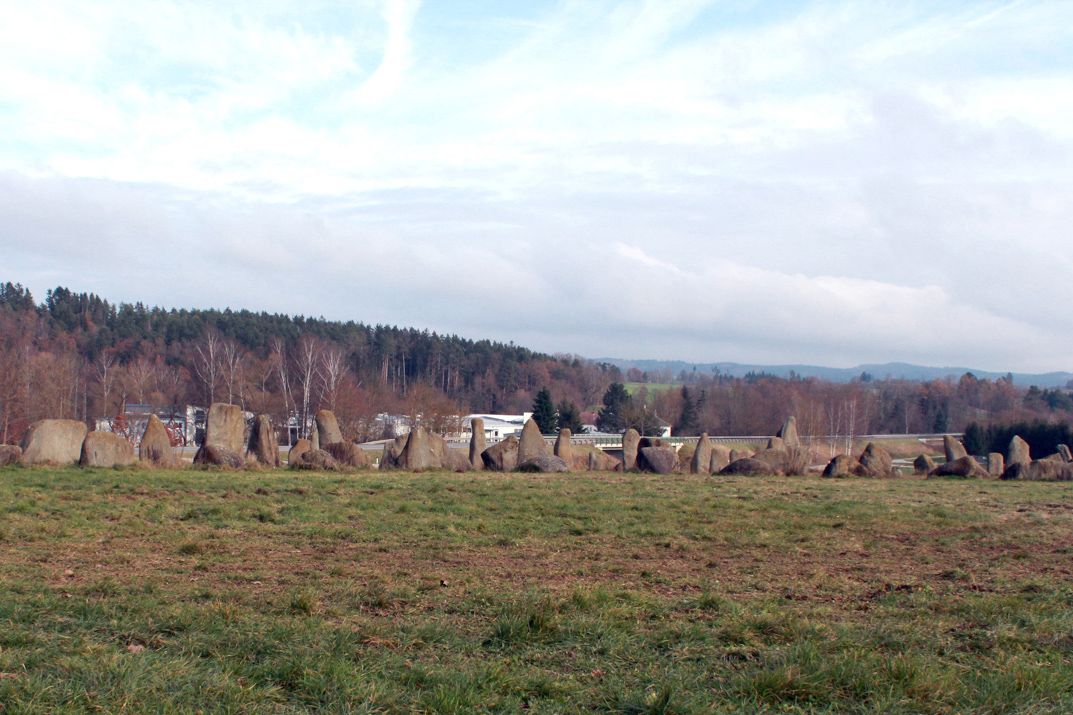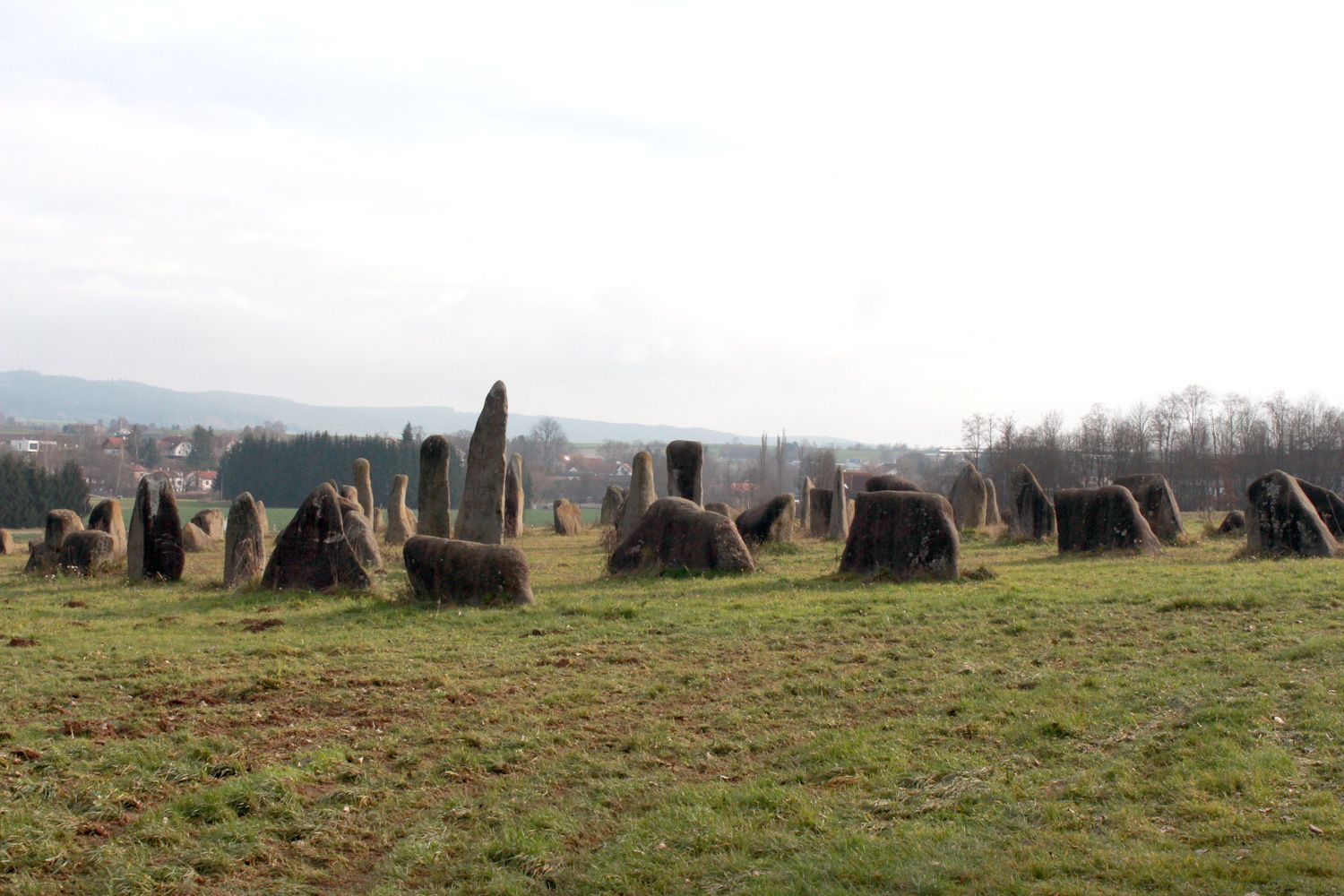Franz Xaver Ölzant
:
Basilika
Back
Information
The title 'Basilika' for the large-scale installation of slightly reworked 'foundlings' (local granite boulders) is based on a purely formal allusion to five church's naves. In accordance with the principle of Land Art the artwork involves a direct artistic intervention in nature.
Ölzant's work lies in the field of tension between two extreme possibilities of artistic production, or to put it more precisely, his sculptural creations are clearly settled at the poles of these possibilities and combine both of them in a strangely ambivalent way. On the one hand, a large part of Ölzant's work is characterised by the greatest artificiality; nothing more appears to be still directly connected to the model of nature. Although, of course, there is a sound which reminds one of the origin of these objects in natural forms – they still share a certain amount of vegetable nature – yet overall they are newly formed, transformed down to the smallest detail and assert themselves solely through their artistic identity. The other pole of art that Ölzant occupies is sculpture, which is kept close to the nature of its material, erratic blocks of diorite. Particularly in recent times, these have been extremely carefully worked by Ölzant, sometimes almost invisibly, as for example in the case of a group of stones which at first glance look like large gravel stones found in nature. Ölzant has given the Basilika its name probably only because of an association with the five naves. Incidentally, the five 'naves' are curved – as can be seen from the way in which they transform the landscape. It is therefore by no means a pseudo-archaeological site or the reduced production of certain Celtic monuments or such like. The Basilika is, instead, completely and utterly contemporary, it has its roots in American Land Art and signifies a direct artistic intervention in nature, it changes nature in the same sense as it brings out the value of nature; it gives form to the coincidence of (cultivated) nature, it interprets the natural forms and accentuates the facts of the landscape – finally, it turns (cultivated) nature into art and in this sense, once again, gives a sensible answer to the question of the relationship of the two categories.
(Otmar Rychlik)
Images (5)





